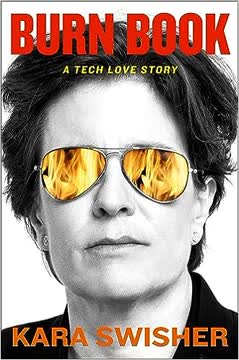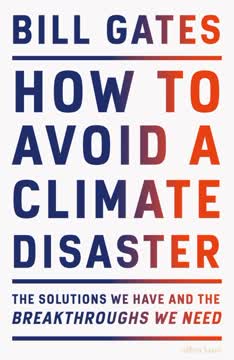Key Takeaways
1. Non-Obvious Thinking: Cultivate curiosity and thoughtfulness
"I am not a speed reader. I am a speed understander."
Cultivate curiosity. Non-obvious thinking requires a mindset of curiosity and thoughtfulness. It involves being observant, asking questions, and approaching unfamiliar situations with a sense of wonder. This approach allows you to see connections and patterns that others might miss.
Develop five key mindsets:
- Be Observant: Pay attention to details others overlook
- Be Curious: Invest in learning and ask questions
- Be Fickle: Save interesting ideas for later analysis
- Be Thoughtful: Take time to develop meaningful perspectives
- Be Elegant: Express ideas in simple, understandable ways
By adopting these mindsets, you can become a "speed understander" rather than just a speed reader, gaining deeper insights and uncovering non-obvious trends that shape our world.
2. The Haystack Method: Curate trends through systematic observation
"Trends are profits waiting to happen."
Systematic trend curation. The Haystack Method is a structured approach to identifying and curating trends. It involves five key steps: Gathering, Aggregating, Elevating, Naming, and Proving. This method allows you to move beyond mere trend spotting to develop meaningful insights about the future.
The five steps of the Haystack Method:
- Gathering: Collect stories and ideas, noting why they're interesting
- Aggregating: Group ideas to uncover bigger themes
- Elevating: Identify underlying patterns that connect multiple clusters
- Naming: Describe trends in accessible, memorable ways
- Proving: Seek data and examples to validate your insights
By following this systematic approach, you can transform a collection of seemingly unrelated observations into powerful trend predictions that drive innovation and strategic thinking.
3. Amplified Identity: Navigating the digital era of self-expression
"To get along and get ahead in this new you-saturated social media arena, you had to be a better you than all the other yous that were suddenly surrounding you."
Digital self-curation. In the age of social media, individuals are carefully crafting their online personas, leading to an amplified sense of identity. This trend reflects a global shift towards individualism and the power of controlling one's narrative in the digital space.
Key aspects of Amplified Identity:
- Everyday Stardom: Expectations of VIP treatment in daily life
- Selfie Confidence: Using self-portraits to build self-esteem
- Artificial Influence: Rise of virtual celebrities and influencers
- Deepfakes and Privacy Concerns: Challenges in maintaining identity integrity
While this trend empowers self-expression, it also raises concerns about authenticity, privacy, and the pressure to present an idealized version of oneself online. As we navigate this new landscape, finding a balance between digital presence and authentic self-representation becomes increasingly important.
4. Ungendering: Redefining traditional gender roles and expectations
"82 percent of Gen Zers [people born between 1995 and 2015] think that 'gender doesn't define a person as much as it used to.'"
Gender fluidity. Traditional gender divisions are being replaced by a more fluid understanding of gender identity. This shift is forcing a reevaluation of how we see employees, customers, brands, and one another. The Ungendering trend is reshaping societal norms and expectations across various aspects of life.
Key elements of Ungendering:
- Fierce Femininity: Redefining women's roles in society and media
- Muddled Masculinity: Evolving perceptions of manhood
- Gender-Neutral Products: Shift away from gendered marketing
- Non-Binary Identities: Growing acceptance of diverse gender expressions
As this trend continues to evolve, it challenges organizations to create more inclusive environments, develop gender-neutral products, and rethink traditional marketing strategies. The future belongs to those who can adapt to and embrace this more fluid understanding of gender.
5. Instant Knowledge: Balancing quick learning with deep understanding
"We don't always process knowledge that we acquire quickly the same way as when we learn something more slowly or thoughtfully."
Speed vs. depth. The rise of on-demand learning and bite-sized content has made it easier than ever to acquire knowledge quickly. However, this trend raises questions about the trade-offs between speed and depth in learning, and the potential loss of traditional skills and deep expertise.
Implications of Instant Knowledge:
- Light-Speed Learning: Growing demand for quick, efficient education
- Degree-Free Learning: Rise of alternative educational paths
- Death of Traditional Skills: Potential loss of deep knowledge and craftsmanship
- Shortcut Culture: Emphasis on efficiency over mastery
While Instant Knowledge offers unprecedented access to information, it's crucial to balance quick learning with opportunities for deep understanding and skill development. The challenge lies in leveraging the benefits of rapid knowledge acquisition while preserving the value of expertise and wisdom.
6. Revivalism: Embracing nostalgia in a complex world
"As we become overwhelmed by a general sense that life has become too complex, we are finding solace in items, products, and experiences that are more nostalgic, such as a book or a board game, and reminiscent of a simpler time in our lives."
Nostalgic comfort. As the world becomes increasingly complex and technology-driven, people are seeking out simpler experiences that offer a sense of nostalgia and remind them of a more trustworthy time. This trend manifests in various ways, from the resurgence of analog products to the popularity of retro brands.
Elements of Revivalism:
- Strategic Downgrading: Choosing simpler, older versions of products
- Back to Trusted Brands: Renewed interest in iconic, familiar brands
- Artisan Crafts: Appreciation for handmade, traditional products
- Digital Conservation: Efforts to preserve history and culture digitally
Revivalism reflects a desire to reconnect with the past and find comfort in familiar experiences. For businesses, this trend presents opportunities to leverage nostalgia in product design, marketing, and brand storytelling, while also addressing the need for simplicity and authenticity in a complex world.
7. Human Mode: Valuing authentic experiences in an automated age
"When school officials and parents send a message to children that 'boyish' girls are badass, but 'girlish' boys are embarrassing, they are telling kids that society values and rewards masculinity, but not femininity."
Authentic connections. As automation increases, people are placing greater value on human-centered experiences and interactions. This trend highlights the importance of empathy, authenticity, and human touch in various aspects of life, from customer service to product design.
Key aspects of Human Mode:
- Enterprise Empathy: Using empathy as a driver for innovation
- Unperfection: Embracing flaws and vulnerability
- Virtual Empathy: Using technology to foster understanding
- Combating Loneliness: Addressing social isolation through human connections
While technology continues to advance, Human Mode reminds us of the irreplaceable value of human interaction and emotional intelligence. Businesses that can strike a balance between automation and human touch will be better positioned to meet the evolving needs and expectations of their customers.
8. Attention Wealth: Managing the currency of focus in the information era
"When the world is supposedly on fire, why waste time worrying about it until you can smell smoke?"
Attention as currency. In an information-saturated world, our attention has become a valuable resource. This trend explores how individuals, businesses, and media outlets compete for and monetize attention, often leading to sensationalism and manipulation.
Elements of Attention Wealth:
- Strategic Spectacle: Using dramatic events to capture attention
- Curated Sensationalism: Pairing engaging content with clickbait headlines
- Manipulated Outrage: Inciting anger for engagement
- Artificial Influence: Leveraging virtual personalities for marketing
As attention becomes increasingly scarce and valuable, it's crucial to develop skills for managing and allocating this resource wisely. For businesses, the challenge lies in capturing attention ethically and providing genuine value, rather than resorting to manipulative tactics.
9. Purposeful Profit: Aligning business success with social impact
"Patagonia is in business to save our home planet."
Profit with purpose. As consumers and employees demand more sustainable and ethical practices, companies are adapting by putting purpose at the center of their business models. This trend reflects a shift towards conscious capitalism, where profit and positive social impact are seen as mutually reinforcing goals.
Key aspects of Purposeful Profit:
- Brand Stand: Companies taking public stances on social issues
- Enlightened Consumption: Consumers making value-based purchasing decisions
- Moonshot Entrepreneurship: Ambitious projects aimed at solving global problems
- Empowered Employees: Workforce demanding alignment with personal values
Purposeful Profit challenges the traditional notion that businesses must choose between profitability and social responsibility. Companies that can authentically integrate purpose into their core operations are likely to gain competitive advantages in terms of customer loyalty, employee engagement, and long-term sustainability.
10. Protective Tech: Balancing convenience and privacy in smart technology
"As protective tech becomes more sophisticated, it will lead to more debates about how much of our daily lives should be trackable and how important personal privacy and individual liberties are when weighed against the broader interests of society."
Smart but secure. As we increasingly rely on predictive technology to keep us safe and make life more convenient, we must contend with the privacy trade-offs required to make it work. This trend explores the double-edged nature of protective technology and its implications for personal freedom and societal well-being.
Aspects of Protective Tech:
- Predictive Healthcare: Using data to anticipate and prevent health issues
- Automated Adulting: Technology simplifying daily tasks and decisions
- Anti-Poaching Drones: Using tech for environmental protection
- Election Security: Balancing digital voting with fraud prevention
While protective technology offers numerous benefits, it also raises important questions about data privacy, personal autonomy, and the potential for misuse. The challenge lies in developing and implementing these technologies in ways that maximize their benefits while minimizing risks to individual privacy and freedom.
11. Data Abundance: Harnessing insights while respecting privacy
"90 percent of the data that currently exists in the world was created in the past two years and it will continue to multiply exponentially."
Data deluge. The exponential growth of data collection and analysis raises questions about data ownership, privacy, and the potential for both positive and negative impacts on society. This trend explores the challenges and opportunities presented by the abundance of data in our increasingly connected world.
Key aspects of Data Abundance:
- Small Data vs. Big Data: Importance of personal data collection
- Data Pollution: Challenges of sorting meaningful insights from noise
- Social Credit Systems: Potential for data-driven social control
- Data Ownership: Evolving expectations around personal data rights
As data becomes more abundant and accessible, individuals and organizations must navigate complex ethical and practical considerations. The challenge lies in leveraging data for valuable insights and innovations while respecting privacy rights and preventing misuse.
12. Flux Commerce: Adapting to ever-changing business models
"As the lines once distinctly drawn between industries erode almost completely, and as business models shift from products being sold not as products but as a service or subscription, and as distribution methods are transformed to eliminate middlemen, winners in this new economy are increasingly those who embrace the fast-changing and increasingly blurred nature of commerce—those who welcome the 'flux' and move with it."
Continuous adaptation. The way we buy and sell is in constant flux, with traditional industry boundaries blurring and new business models emerging rapidly. This trend highlights the need for businesses to remain agile and innovative in the face of ongoing disruption.
Elements of Flux Commerce:
- Industry Blur: Companies expanding beyond traditional sector boundaries
- Subscription Economy: Shift from ownership to usership models
- Retail Reinvention: Evolving store experiences and distribution methods
- Innovating Innovation: New approaches to fostering creativity and change
Flux
Last updated:
Review Summary
Non Obvious Megatrends received mixed reviews, with an average rating of 3.57/5. Readers appreciated the methodology for trend spotting and found value in the first section on non-obvious thinking. Some felt the trends were insightful, while others found them obvious or outdated. The book's structure and writing style were praised by some but criticized by others. Many readers found it thought-provoking and useful for business strategy, though some felt it lacked depth in certain areas. Overall, it was considered a quick, engaging read that sparked ideas and conversations.
Similar Books










Download PDF
Download EPUB
.epub digital book format is ideal for reading ebooks on phones, tablets, and e-readers.





